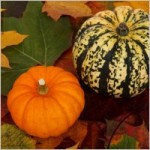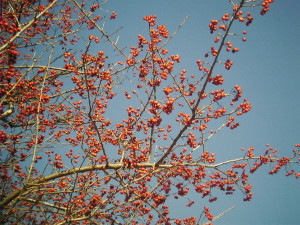Chinese Medicine
Cupping Around The World
by Jon Pontrello, LAc
A few weeks ago, I went up to Canada to take a curing class with a teacher who had travelled from Australia. This class would not be my introduction to cupping. For the last few years I have been working in a clinic where I learned how to cup and practiced regularly under the guidance of a practitioner who has been cupping since before I was born. My reasoning for taking this class is not because my glass was half empty, but rather because my glass is half full. I am fascinated by cupping because, like an acupuncture needle, a cup is a very simple tool that in the hands of a skilled practitioner can provide a very effective and economical treatment for many health problems.
Cupping is a method of using suction to create a therapeutic effect. This is most commonly done using a cotton ball mini-torch that is carefully inserted into the body of the cupping vessel so that when the flame uses up the available oxygen within the cup, a vacuum is created. When the cup is placed upon the surface of the skin a negative pressure system is created, which causes the suction effect.
Where does the therapeutic effect come from? What does suction have to do with the common cold or back pain? The answer depends on which era of medicine you ask. If you were able to summon people that lived in prehistoric times, they might tell you that the cups pull out evil spirits. We know from the times that traditional medicines of China and Greece were being put into writing around two thousand years ago that they believed the cups were having an effect on the meteorological causes of diseases such as wind and/or cold, and that they helped to move bad, old or stagnant blood. In modern times, researchers also say that cups help to increase circulation, though some people today will tell you the cups have no effect at all and that the benefit is an illusion in the imagination.
One of my favorite stories from the class was from over a century ago when a recent graduate of medical school was doing his apprenticeship with an experienced doctor. They were doing a house call in a rural area of Australia and the patient had a severe case of lumbago (back pain). The doctor asked the apprentice what to do, and the apprentice just shook his head while fumbling over his words trying to remember what he learned in school. So the doctor applied cups and soon after the patient was walking freely without pain. The apprentice was amazed, especially in light of the fact that his professors in medical school had pounded the nail into the coffin of cupping practice, saying it was a useless form of treatment.
There were many other anecdotes in class, one about a lady who got relief from the common cold, saying that she would not believe the benefit of cupping unless she had experienced it herself. Another story of a German spy who had been exposed to radiation who said that the only relief he could find was from a cupping treatment. There was a story of a cupping practitioner from Russia who emigrated to Australia who was so worried that she would not be able to buy cups where she was going that she filled up the only suitcase she could bring with cupping vessels!
One of the nights after my class, I was talking to the host of the AirBnB where I was staying. He was from Tunisia and was very excited to to find out I was learning about cupping. He was Muslim and did not know the cupping existed outside his religion. He did not know a lot about that part of his religion, so we started watching videos on YouTube and he translated them for me. In the Muslim religion, it is called hijama and it is slightly different than the cupping I have described above. They create an small incision in the skin before applying the cups so that the cups fill up with blood, it is usually only done during certain parts of the moon’s phase. It is believed to help to purify the body and mind. Hijama is a revelation of their religion. Their prophet does not claim to invent it, but rather became aware of the benefits and says it is a very valuable thing to do so he recommends it to his followers. The next day I mentioned this in class and many people were surprised to know that Muslims practiced cupping.
On the last day of class, the teacher was showing us a particular method of cupping that focused on knee pain that he had learned from a teacher in Taiwan. He said that once when he was teaching this method, one of the students said he had learned the same method from a teacher in Egypt. Before taking this class I had primarily thought of cupping as one of the many conjunctive therapies to Chinese medicine, but afterwards I’m starting to see it as an integral part to a much bigger picture than I was aware of.
On the way back from Canada the border patrol asked me what I was doing in Vancouver. I told her cupping, and she said she knew about it because of Gwyneth Paltrow. I’ve got to say I am happy that celebrities and Olympic athletes have rekindled the awareness among the public of cupping, but I also want remind people that cupping is not a passing fad like jazzercise or the south beach diet. Cupping is a timeless medicine for the wellness of everyday people.
Easy Thai Pumpkin Soup
 Traditional Chinese medicine recommends eating foods in season to help keep your body in balance with the natural environment. Root veggies and pumpkin are good foods to eat in fall and winter. This hearty, creamy, dairy-free soup is delicious, simple to make, and very soothing on a cold day. Serve by itself or with a slice of good bread. Here is Linda’s recipe:
Traditional Chinese medicine recommends eating foods in season to help keep your body in balance with the natural environment. Root veggies and pumpkin are good foods to eat in fall and winter. This hearty, creamy, dairy-free soup is delicious, simple to make, and very soothing on a cold day. Serve by itself or with a slice of good bread. Here is Linda’s recipe:
INGREDIENTS:
1 small pumpkin (I prefer kabocha pumpkin)
1-2 medium potatoes
1 qt veggie soup stock (or chicken stock), fresh or canned
1 can coconut milk (sometimes called coconut cream)
2-3 tsp freshly grated ginger (or approx. 1/8 to 1/4 tsp ground ginger)
Dash of lime juice
Optional items:
1/2 tsp Thai green chili paste* or Thai red chili paste* or a dash of chili flakes
Cilantro for garnish *available in Asian sections of supermarkets
NOTE: There is plenty of “wiggle room” in this recipe. Ingredient amounts are not exact as the size of pumpkin will vary. It’s much easier to get it “right” than it is to go wrong. Let your taste buds guide you with the seasonings. About the pumpkin peel: kabocha pumpkin peel is soft and tasty so leave it on. Orange “Halloween” pumpkin peel tastes fine on smaller pumpkins but can be tougher and woodier as the pumpkins get larger. If in doubt, peel the orange pumpkin before cooking.
DIRECTIONS:
1. Split pumpkin into halves (click here to learn how), scoop out the seeds, (if using orange pumpkin, peel it if desired,) then chop into cubes.
2. Chop potatoes into cubes. (You may first peel them if desired. I prefer to leave skins on for fiber and nutrients)
3. Place pumpkin, potato and soup stock in a large pot. Boil gently approx. 30 minutes until pumpkin and potato are tender and mushy.
3. Add coconut milk. Stir well. Reduce heat to low.
4. Add ginger and lime juice to taste. Stir. Optional: Add chili paste or chili flakes. Stir.
[Tip: If soup needs more depth to the taste, then add a dash of ground cumin]
5. By now, the soup is thick and creamy. Ladle soup into bowls. Optional: Garnish with fresh cilantro leaves.
6. Enjoy!
The Inside Scoop on Cholesterol and The One Chinese Herb That Could Crush It
 According to the Centers for Disease Control and Prevention (CDC), people who suffer from high LDL cholesterol are twice as likely to develop heart disease – the number one cause of death in both men and women (source). High levels of LDL cholesterol is a serious health condition that affects approximately 71 million adults in the U.S. (1 out 3). But an ancient Chinese herb is turning heads in the medical community due to its surprisingly powerful effects on cholesterol levels.
According to the Centers for Disease Control and Prevention (CDC), people who suffer from high LDL cholesterol are twice as likely to develop heart disease – the number one cause of death in both men and women (source). High levels of LDL cholesterol is a serious health condition that affects approximately 71 million adults in the U.S. (1 out 3). But an ancient Chinese herb is turning heads in the medical community due to its surprisingly powerful effects on cholesterol levels.



